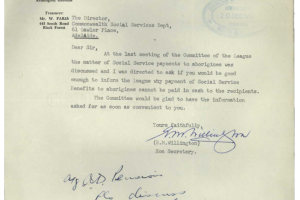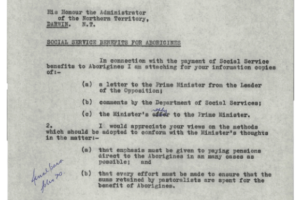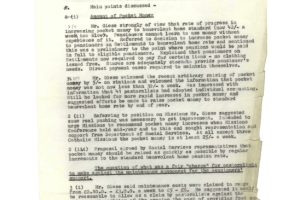
Artefacts about Missions, reserves & stations
A leaflet calling for Aboriginal affairs to become a federal government responsibility showed how state-based laws that governed Aboriginal people differed and led to inequality.
Activist EM Willington successfully petitioned the government for direct payments for Aboriginal people who had earned an independent income, paid taxes and managed their money their whole lives.
Government officials reported on how managers of missions, stations and settlements were using government payments for Aboriginal people in the Northern Territory. They collected minimal information from Aboriginal payment recipients.
In letters sent in the early 1960s, the opposition questioned the government about the practice of missions, stations and reserves using Aboriginal people’s payments on their behalf. In their response, the government defended the practice.
In a series of letters, senior DSS officials discussed government payments at New Mapoon in Queensland. Their discussion revealed the deeper issue of the way the Queensland Government exerted control over Aboriginal and Torres Strait Islander people’s lives.
As well as working with communities on government-run reserves in the Northern Territory, Vai Stanton Mimbinggal worked with the government to improve conditions for Aboriginal people nationally.
Aboriginal people living on stations and missions only received part of their government payment to manage themselves. In 1965, officials met to discuss how much this should be and how to standardise the amount people got.
During the 1960s, there was increasing pressure for Aboriginal pastoral workers to get equal wages. The government was reluctant to grant Unemployment Benefit payments to Aboriginal workers who were likely to be affected by changes to wages.







